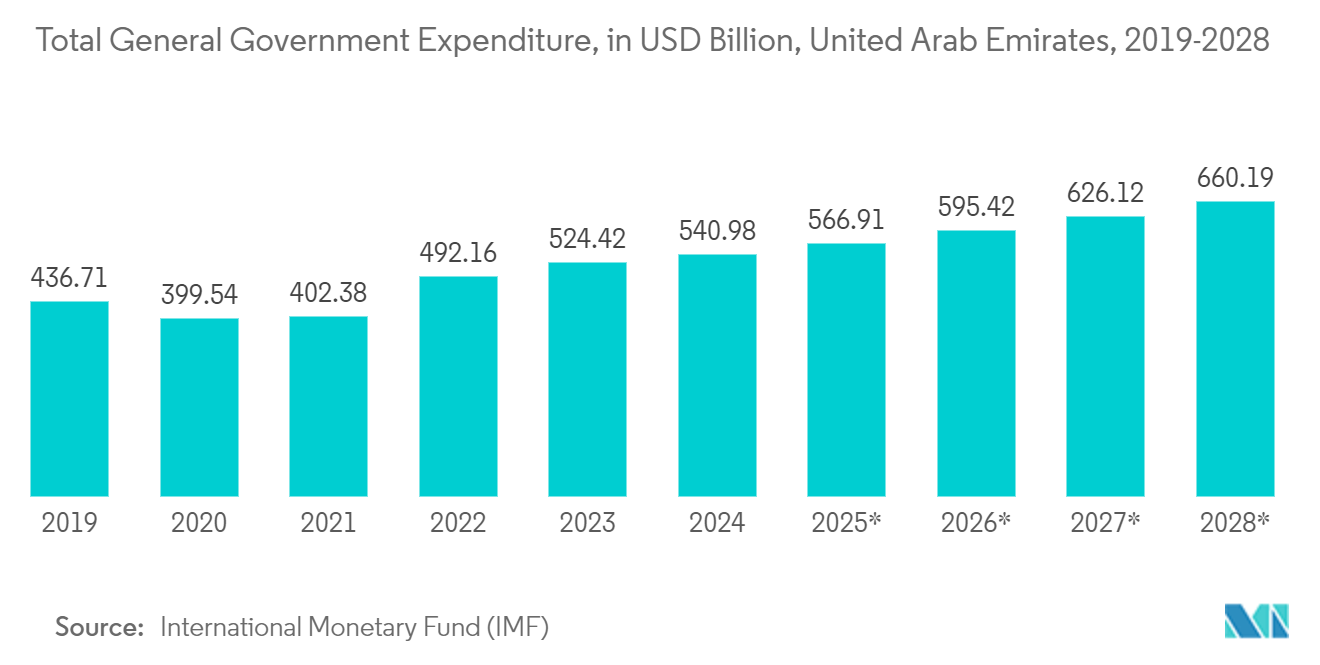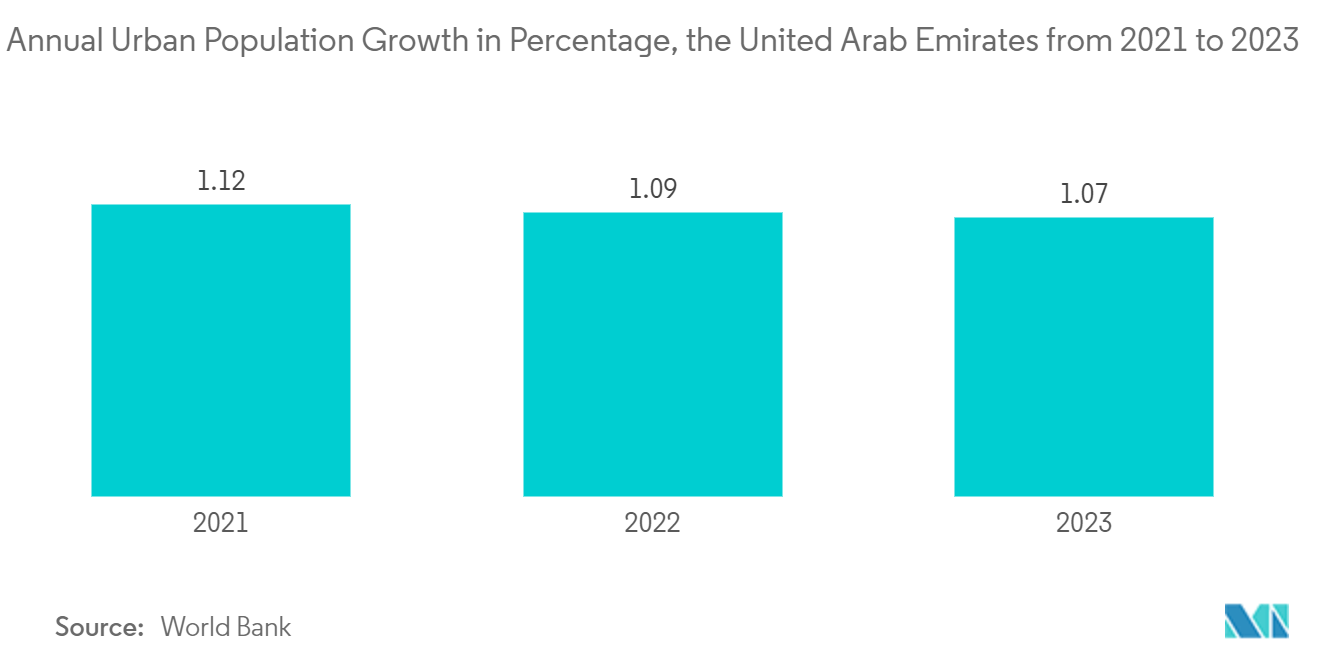Market Trends of UAE Satellite Imagery Services Industry
Strategic Government Initiatives and Substantial Investments to Drive the Market Growth
- The UAE government has taken proactive measures to develop its space industry, recognizing the immense potential of space technology and Earth observation capabilities. These initiatives have positioned the country as a prominent player in the global satellite imagery services market, driving advancements in satellite technology, data analytics, and remote sensing applications.
- The UAE government established the Mohammed bin Rashid Space Centre (MBRSC) and the UAE Space Agency to spearhead space-related activities. These specialized entities play pivotal roles in developing, operating, and promoting satellite imagery services for governmental and commercial purposes. Moreover, the UAE cabinet approved the National Space Strategy 2030, which includes 79 space science and research projects, manufacturing, assembly, testing, and commercial space services.
- The UAE government actively fosters partnerships and collaborations with international space agencies and private companies to expand its access to advanced satellite technology and data sources. These collaborations provide the UAE with valuable insights, knowledge exchange, and access to global space resources.
- Further, the IMF anticipates that the total general government expenditure will reach around USD 660.19 billion in 2028. The expenditure was recorded to be USD 402.38 billion in 2021. Such significant spending might contribute to the government's vision for space exploration, fostering partnerships, and nurturing a thriving space ecosystem, positioning the UAE as a prominent player in the global satellite imagery services market.

Urban Development and Cultural Heritage to Hold a Significant Market Share
- The UAE's vision for smart cities necessitates advanced technologies and data-driven solutions. Satellite imagery services offer valuable insights into various aspects of smart city implementation, such as traffic management, waste management, energy consumption, and environmental monitoring. Satellite data enables the integration of smart technologies and the seamless functioning of interconnected urban systems, ensuring efficient resource management.
- For instance, According to the International Institute for Management Development (IMD) Smart City Index for 2023, published by Switzerland, the capital of the UAE ranked 13th worldwide. The research also stated that Abu Dhabi's digital-first initiatives have allowed it to maintain its position as the Middle East and North Africa's brightest city.
- As urban areas expand, satellite imagery becomes indispensable for analyzing land use changes and identifying potential development areas. The imagery helps assess the impact of urban expansion on the environment, identify suitable sites for infrastructure projects, and implement effective urban planning policies.
- For instance, according to IMF data, the proportion of people living in urban areas in the United Arab Emirates was almost 87.54 percent in 2022. However, with 87.54 percent, 2022 still marked the United Arab Emirates' highest share.
- Moreover, the UAE boasts a rich cultural heritage that spans millennia, including archaeological sites of historical significance. Satellite imagery services are crucial in mapping and preserving these archaeological sites, aiding archaeologists and heritage experts in documentation and restoration efforts. High-resolution satellite imagery allows for non-invasive surveying of historical locations, safeguarding their authenticity.


